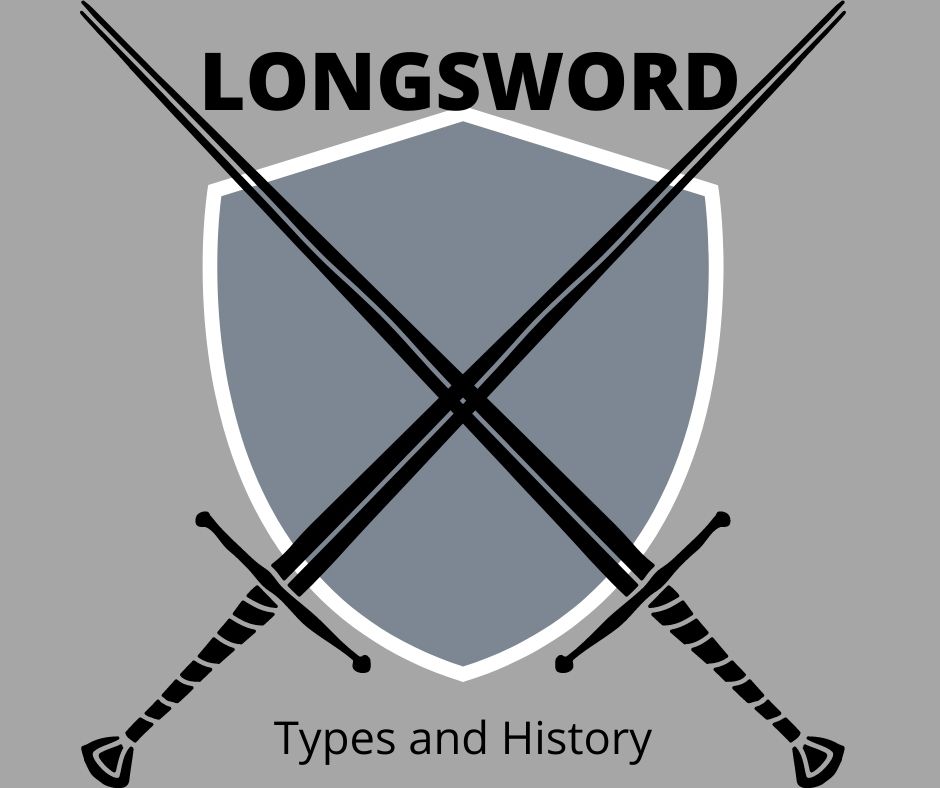
What is a longsword?
A longsword (long sword) is any sword that is generally wielded with two hands. A defining characteristic of the sword isn’t the overall length, it’s the length of the handle. The hilts (handles) range from 8 to 16 inches long to provide room for gauntleted hands. Most long swords were double edged.
The design of the sword itself has a very utilitarian feel, the whole sword from the pommel to the tip must be useful in combat. While the designs vary in ornamentation over the 350 years it was used, it carried much of the same look through the period. Longswords were very different than Asian Katana’s in many respects. The hilt is longer, there is a cross guard, the overall weight is much heavier and the blades were straight. The only exception to a straight blade was the Flammenschwert or “flame sword” which was a two handed German sword with a wavy blade.
Where did the longsword originate?
It was born of the knights and kings of greater Europe. There are independent developments of the longsword across Europe. Japan did have a variation of their Katana that could be considered a longsword, but it did not have a crossguard or quillon as most others do. Therefore it is considered a ‘large’ Katana instead.
Vikings had a variant version, Scots had the claidheamh mòr, often referred to as the “claymore”. Also, the German footsoldiers (the Landsknechte) known to be used to storm a line of Pikemen used a rendition of the longsword called a Zweihänder . It is with this weapon that they were able to cut through the sharp tips of the pike and win battles.
The Spaniards, Italians, Portuguese and French also had their own versions of a longsword. Contrary to modern movies and depictions of knights in battle, the longsword was a relatively rare weapon of choice. It is first seen sometime in the 1100’s and then fully leaves the historical medieval period in the 16th century. As swords go, it has a relatively short lifespan.
What are the different types of longswords?
As mentioned above, there are lots of different names and slight variations of the European longsword. Most variations have primarily cosmetic differences and therefore are not really a different sword from other “types”. For example, the Zweihänder and Portuguese Montante are essentially identical. The only difference is that the quillon (cross guard) of the montante has an additional circular guard at the base to provide additional protection. Here is a generic and incomplete breakdown:
Bastard Sword: A non-specific term that historians don’t necessarily agree upon. It is generally a sword too long to be an arming sword and too short to be a longsword.
Hand and a half sword: A sword that may be wielded equally with one hand or two hands. It may have a one handed grip with a large ricassa or a two handed grip. This depended upon the balancing requirements of the wielder.
Zweihänder : A late period German longsword that varied in length and weight but generally carried some common characteristics. 1. It had a two handed hilt. 2. It had curved quillons (cross guard). 3. There was a large ricassa for gripping the sword on the blade. 3. it had characteristic “Schilden” past the ricassa. Other swords that were similar are the Montante and the Espadon. These sword types were on the larger end of longswords and are sometimes referred to as great swords.
English longsword: This sword had a two handed hilt, varying quillon size and a blade longer than an arming sword that varied in length. This is true of the Scottish claymore, Swiss longsword, Italian Spada Longa, and German Lange Shwert.
How do you fight with a longsword?

Contrary to modern movies, the weapon was often wielded by grabbing both the hilt and the blade in a manner more akin to a sharpened pole. This was called “half swording” and was an excellent method to create a lot of force. Fighting with a longsword was rarely done in a large battle or melee. This weapon was often reserved for more of a duels or one on one scenario. In that case, it was wielded much differently than spoken of above.
Fighting with a longsword in this manner is still trained in modern day sports such as HEMA (Historical European Martial Arts). This sport uses historic manuscripts and documents on sword play to train in those methodologies. Modern longsword use is almost exclusively done in a duels scenario. The use of it in full contact medieval armored combat sports is ineffective as thrusting and stabbing isn’t permitted.
However, there are known uses of the longsword in battles. Knights on horseback would use a bastard or “hand and a half” sword because it could be used with one hand but was generally longer than typical one handed sword. The German mercenary troops of the 1500’s would use the Zweihänder in combination with pikemen to attack enemy pike lines.
